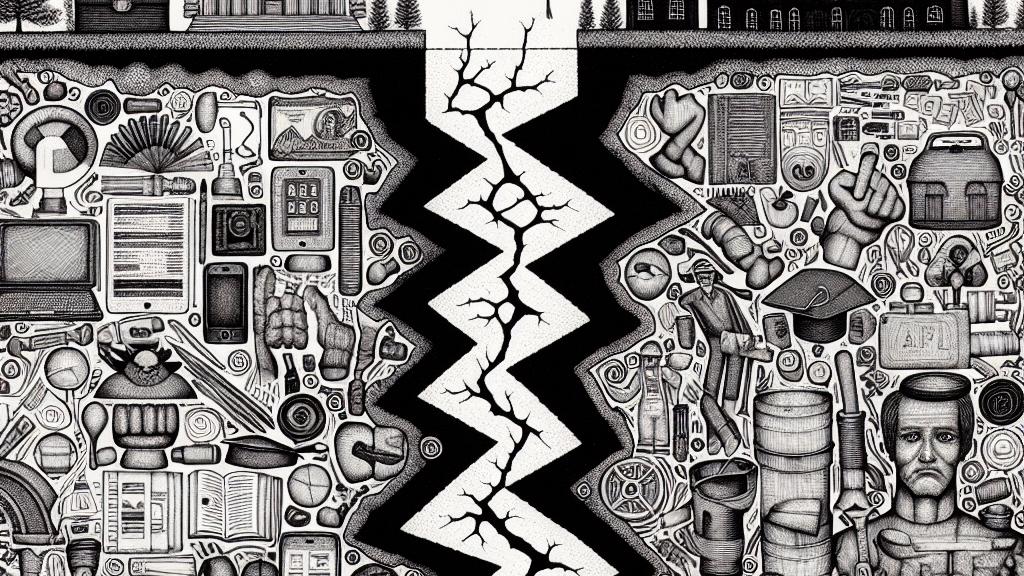The Disconnect of the Highly Educated Class from American Reality
Overview
- The highly educated professional class is increasingly detached from the everyday experiences of many Americans.
- Shifting demographics and evolving voting patterns are reshaping the political landscape in significant ways.
- A growing rift in values and priorities is evident between educated elites and the wider population.

Understanding the Disconnect
In today's America, an alarming disconnect exists between the educated professional class and the realities faced by ordinary citizens. Just look back at the recent elections. Many expected demographic patterns were completely overturned. Non-college graduate voters overwhelmingly supported Trump, while educated voters exhibited a muted response to calls for meaningful change. This stark contrast raises an important question: What has caused the increasing divide? Professionals often focus on issues like climate change or higher education funding, while the average voter grapples with bread-and-butter issues that directly impact their lives. As the Democratic Party gravitates towards an elite educational base, they risk alienating a crucial segment—non-college graduates—who make up a considerable portion of the electorate and whose voices are vital for a balanced democratic process.
The Impact of Economic Hardships
Economic challenges paint a vivid picture of this divide. Non-college-educated Americans commonly voice deep concerns about pressing issues: rising crime rates, inflation, and job security. Imagine a small business owner in a low-income neighborhood. Every day, she faces the very real threat of theft, where even a few hundred dollars stolen can mean the difference between survival and shutting her doors for good. Her story is not just her own; it resonates with countless others who feel the brunt of economic changes. Meanwhile, many educated professionals reside in affluent areas, enjoying relative security. This isolation shields them from the harsh realities that many Americans contend with daily, deepening their divide not just in experience but in understanding. While one group debates theoretical policy proposals, another struggles to meet their basic needs, highlighting the palpable gap in empathy and awareness.
Social Perceptions and Information Sources
Additionally, the way information is consumed further fuels this divide. The educated elite often immerse themselves in data-laden discussions, expert analyses, and polished journalism, forming a narrative that can seem optimistic and disconnected from reality. In contrast, many ordinary citizens rely on local news or personal testimonies, which present a much different picture of life in America. For example, during a ride with an Uber driver, his grievances about rising prices and job anxiety poured out—his frustration was palpable. His beliefs painted a strikingly different narrative than those circulating in popular media. This encounter underscores how diverging information ecosystems create opportunities for misunderstanding and reinforce the divide between the two classes. Until bridges are built to connect these vastly different perspectives, the educated class risks further alienation and a lack of real insight into the lives of their fellow citizens.

Loading...